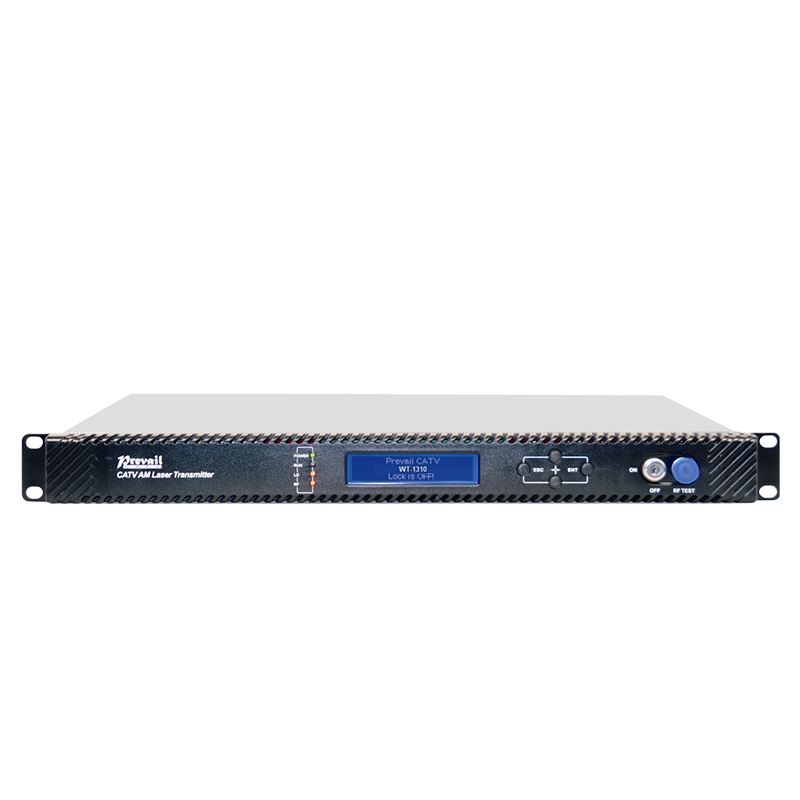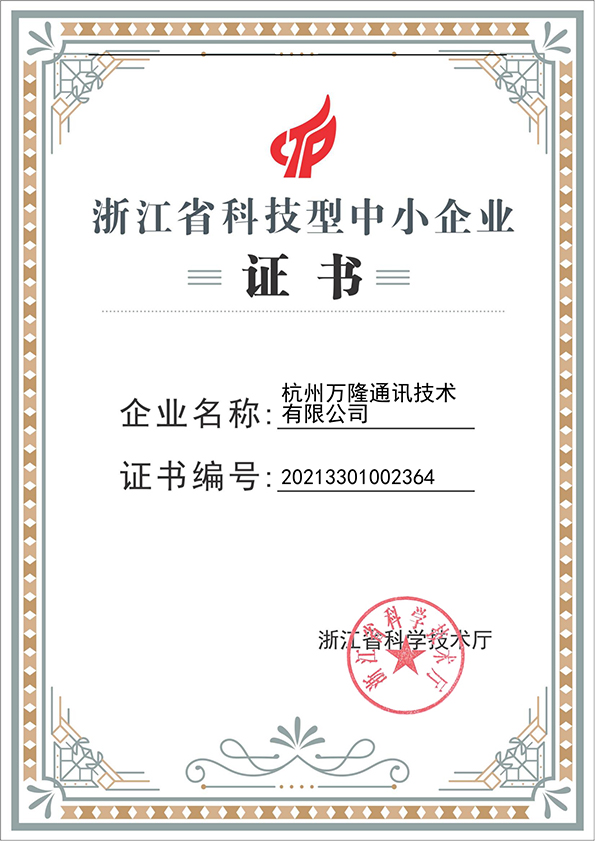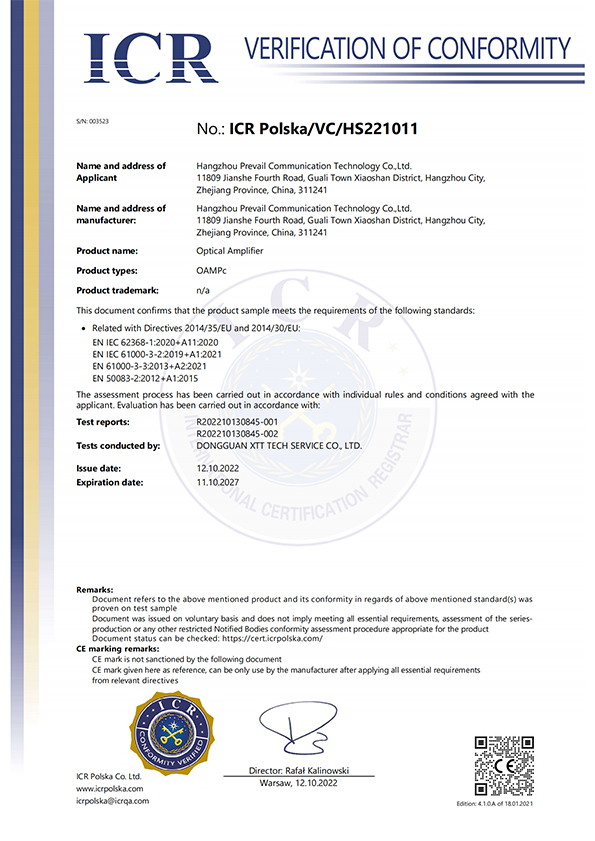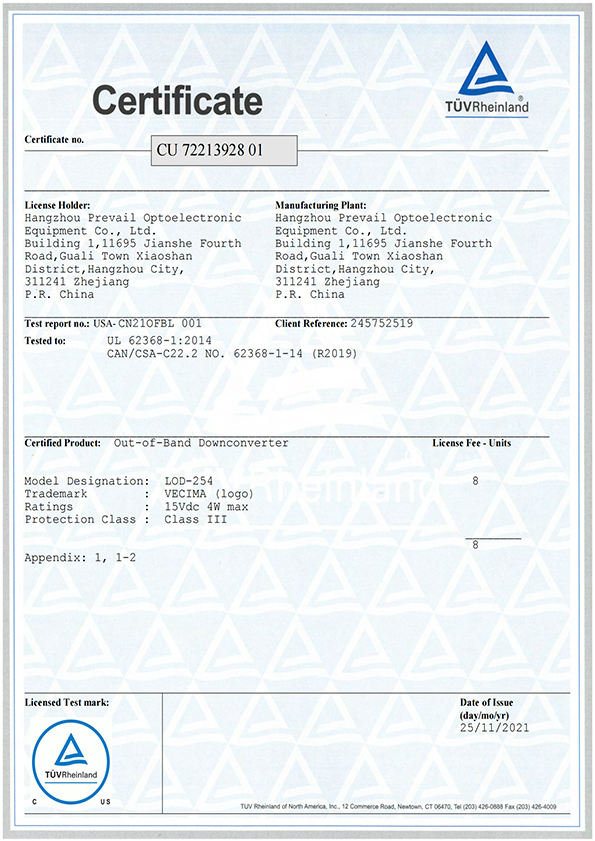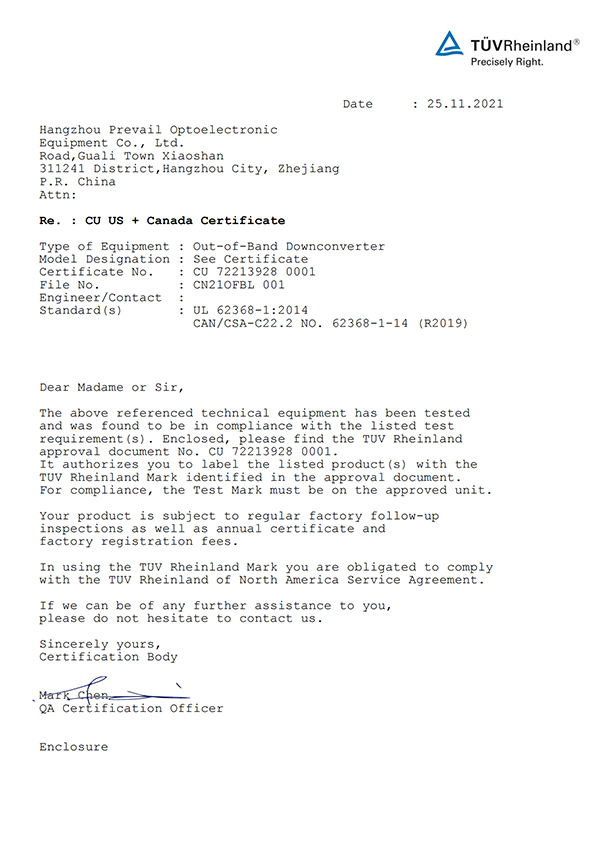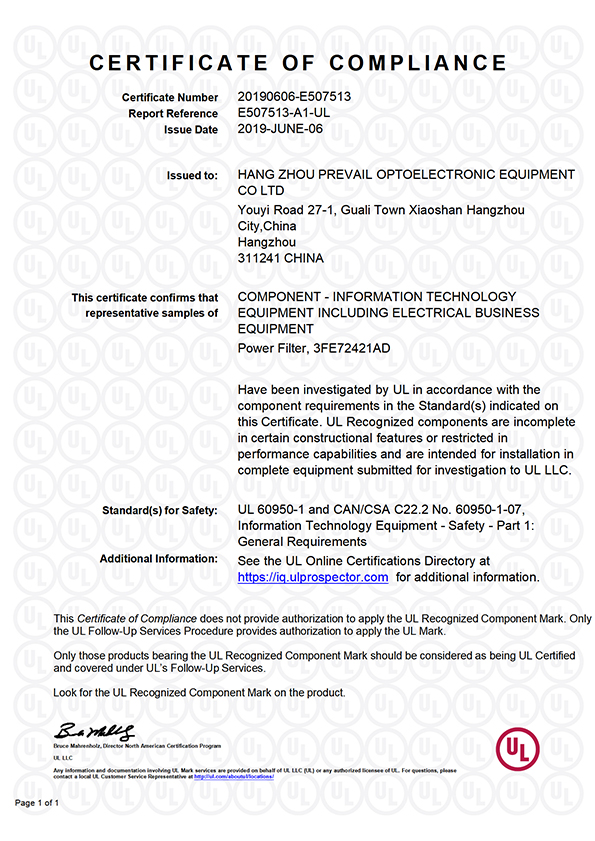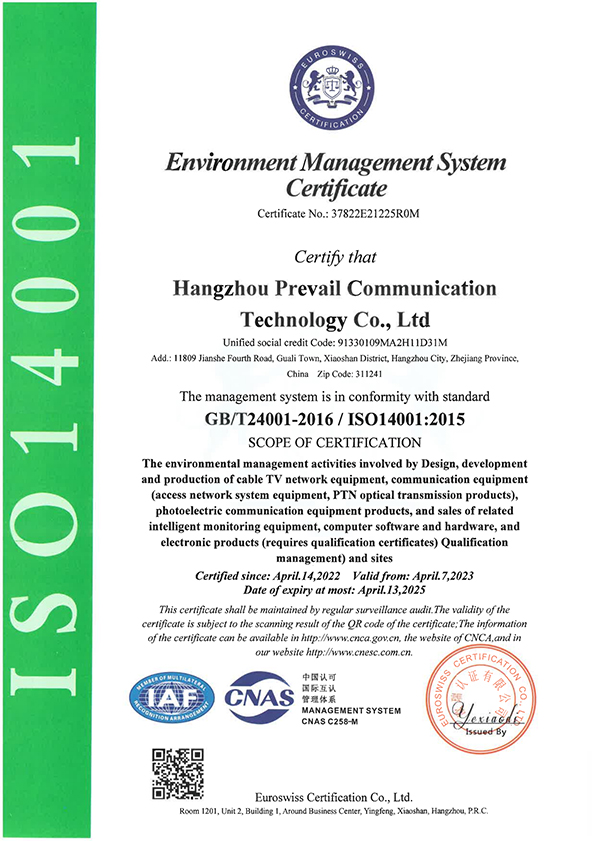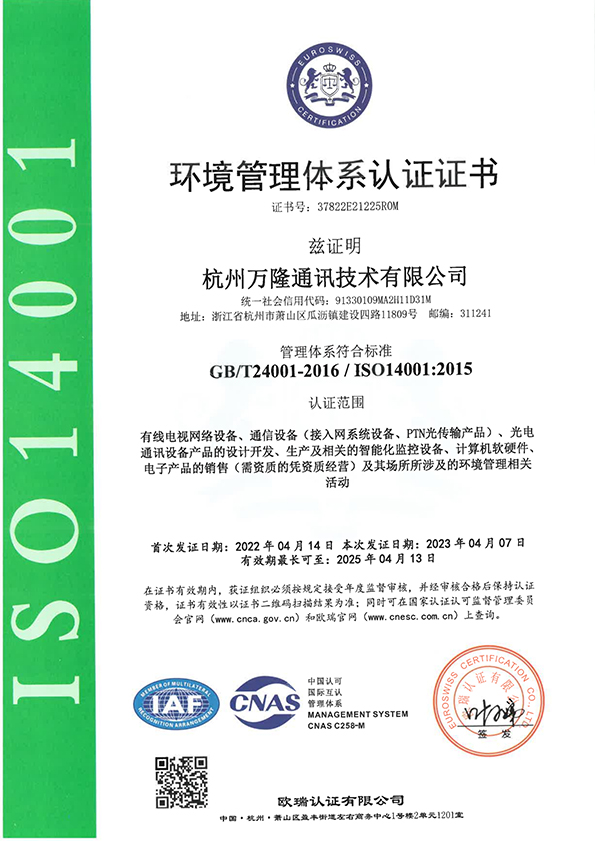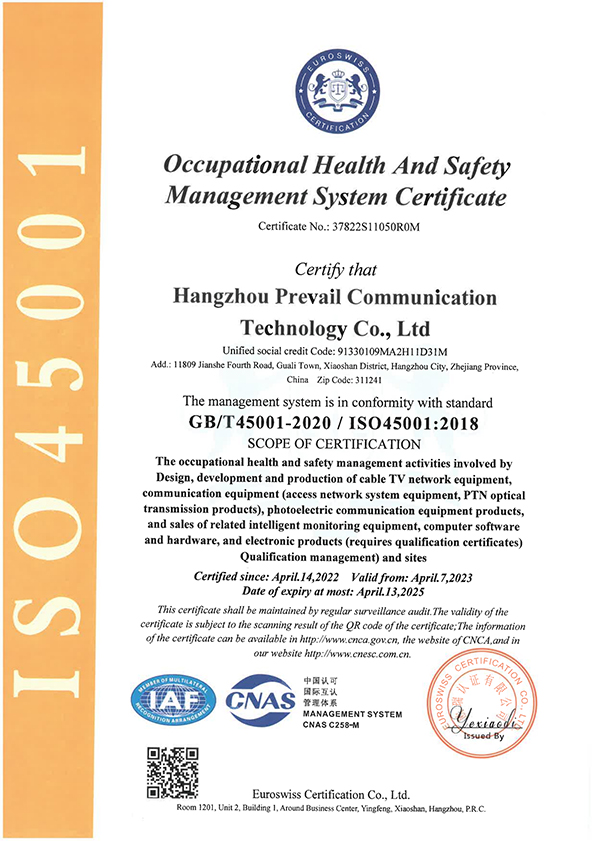Performance Characteristics
● Support 1.2 GHz band and the DOCSIS 3.1 standard.
● AGC and MGC gain control modes are optional.
● DFB coaxial or butterfly-typed laser is available.
● Output optical power is from +6dBm to +15dBm optional.
● Pre-distortion technology, good CNR, CSO, and CTB indicators are high.
● Two inputs with isolation up to 50dB.
● Dual power supply hot backup, a variety of power feed options; AC100-240V and DC48V are optional.
● LED status indication in the front panel.
● Laser output power, bias current and cooling current are detected in real time.
Block Diagram
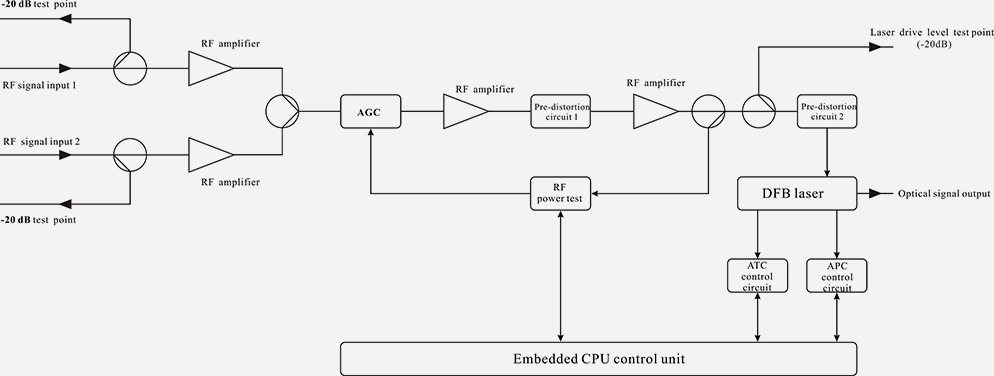
Technique Parameters
| Item |
Unit |
Parameter |
| Optical Part |
| Output optical wavelength |
nm |
1310 ± 20 |
| Output optical power |
mW |
4 ~ 31(+6dBm ~ +15dBm) |
| Laser type |
— |
DFB laser |
| Optical modulation mode |
— |
Direct optical intensity modulation |
| Optical connector type |
— |
SC/APC or FC/APC |
| Optical return loss |
dB |
> 45 |
| RF Part |
| Frequency range |
MHz |
47 ~ 870/1003/1218 |
| Flatness in band |
dB |
± 0.75 |
| RF input impedance |
Ω |
75 |
| Input test port |
dB |
-20±1 |
|
| Laser drive level test port |
dB |
-20±1 |
|
| Input return loss |
dB |
≥ 16 |
| C/N |
dB |
≥ 52 |
550MHZ 59CH analog signal 77dBuV/CH |
| 550-870MHZ 40CH digital signal 67dBuV/CH |
| -1dBm optical receiving power, 0KM fiber |
| C/CTB |
dB |
≥ 67 |
|
| C/CSO |
dB |
≥ 62 |
|
| RF input level |
dBuV |
80±5 |
| Adjusting range under AGC mode |
dB |
± 5 |
| MGC attenuation range |
dB |
0 ~ 15 |
| Others |
| Operating temperature |
℃ |
-5 ~ + 45 |
| Storage temperature |
℃ |
-20 ~ + 65 |
| Maximum power consumption |
W |
≤15 |
| Weight |
Kg |
5.5 |
Operation instructions of the display menu
▲▼ key: The cursor can be moved left or right or up and down, and the selected module or menu is highlighted.
Enter key: Press Enter to enter the next submenu or set the parameters in the submenu. Press Enter to confirm.
ESC key: Exit or return to the previous menu.
The menu displayed after power on: Press Enter to enter the first level submenu:

| 1. Disp Parameters |
Parameter display menu
|
| 2. Set Parameters |
Parameter setting menu
|
| 3. Alarm Status |
Alarm status
|
Disp Parameters, the second level submenu:
| Laser Output |
xx dBm |
Laser output optical power
|
| Laser Bias |
xx mA |
Laser bias current
|
| Laser Temp |
xx ℃ |
Internal temperature of the laser
|
| Tec Cooling |
xx A |
Laser cooling current
|
| RF Channel Number |
xx |
Transmission channel numbers
|
| Laser RF |
xx dBuV |
Laser drive level
|
| RF Control Mode |
AGC |
RF control mode
|
| AGC Ref |
x dB |
AGC offset (in AGC mode)
|
| MGC ATT |
x dB |
MGC attenuation (in MGC mode)
|
| +5V Read |
x v |
+5V monitoring voltage
|
| -5V Read |
x v |
-5V monitoring voltage
|
| +24V Read |
x v |
+24V monitoring voltage
|
| Wave Length |
1310 |
Equipment wavelength
|
| S/N |
|
Serial number
|
| BOX Temperature |
xx ℃ |
Current internal temperature
|
| IP Address |
|
Equipment IP address
|
| Subnet Mask |
|
Equipment subnet mask
|
| Net Gateway |
|
Equipment gateway
|
| Mac |
|
Equipment MAC address
|
| SoftWare Version |
|
Equipment software version number
|
Set Parameters, the second level submenu:
| SetLaserOutputUnit |
dBm |
Optical power unit: dBm, mW optional
|
| Set BuzzerAlarm |
ON |
Buzzer alarm: ON, OFF optional
|
| SetChannel Number |
XX |
Number of channels: 0-100 optional
|
| SetRF ControlMode |
AGC |
RF control mode: AGC, MGC optional
|
| Set AGC Ref |
XX dB |
AGC offset: ±5dB optional
|
| Set MGC ATT |
XX dB |
MGC attenuation: 0-15 optional
|
| Set IP Addr |
|
Set the equipment IP address
|
| Set Subnet Mask |
|
Set the subnet mask
|
| Set GateWay |
|
Set the gateway
|
| Restore Factory Config |
|
Reset to the default
|
Alarm Status, the second level submenu:
|
Laser RF
|
Laser level alarm: The default normal range is 80~110dBuV,
which can be set through the network management. |
|
|
Laser Temp
|
Laser temperature alarm: The default normal range is 25±10°C, |
| which can be set through the network management. |
|
Laser Bias
|
Laser bias current alarm: The default normal range is 20~90mA, |
| which can be set through the network management. |
|
Laser Output
|
Output optical power alarm: The default normal range is 2 to 25 mW, |
| which can be set through the network management |
|
Laser TEC
|
Laser cooling current: The default normal range is -1.5~1.5A, which can be set through the network management.
|
|
+5V Alarm
|
+5V alarm: The default normal range is 5±1V, which can be set through the network management.
|
|
-5V Alarm
|
-5V alarm: The default normal range is -5±1V, which can be set through the network management.
|
|
+24V Alarm
|
+24V alarm: The default normal range is 24±2V, which can be set through the network management.
|
Structure Description

Front panel
| 1 |
Power indicator |
| 2 |
Device running indicator: This indicator will flash by 1Hz frequency after the device start running normally. |
| 3 |
Laser working status indicator: |
| Steady green light: The laser is operating normally. |
| Steady red light: The laser is not turned on. |
| Blinking red light: The device has a parameter alarm. You can view the alarm in the Alarm Status, the second level submenu. |
| 4 |
Laser drive level indicator: |
| Steady green light: Drive level is normal. |
| Blinking red light: Drive level alarm. You can view the alarm in the Alarm Status, the second level submenu. |
| 5 |
Laser switch: |
| ON: The laser is on. |
| OFF: The laser is off. |
| Keep the laser off before the device is powered on, and turn on the laser after the self-inspection is completed when power on. |
| 6 |
Laser drive level test port: -20dB |

Rear panel
| 1 |
Fan |
7 |
Optical signal output |
| 2 |
Ground stud, ensure good grounding before power on |
8 |
RS232 interface |
| 3 |
RF input 1 |
9 |
LAN interface |
| 4 |
RF input 2 |
10 |
Power module 1, hot swappable |
| 5 |
RF input 1 test port -20dB |
11 |
Power module 2, hot swappable |
| 6 |
RF input 2 test port -20dB |
|
|
Dimension
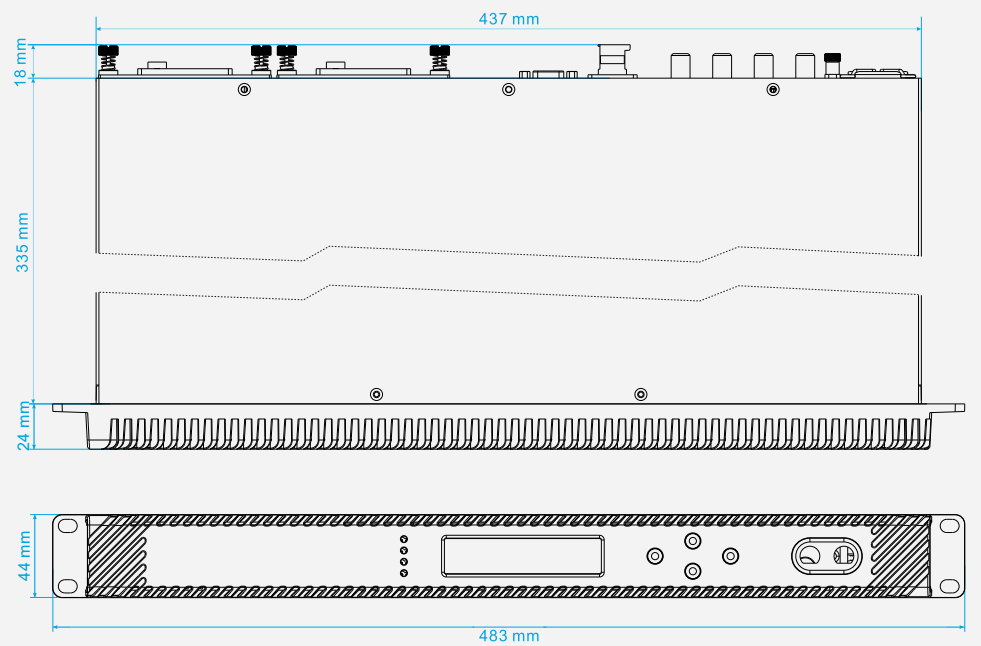
Naming Specification
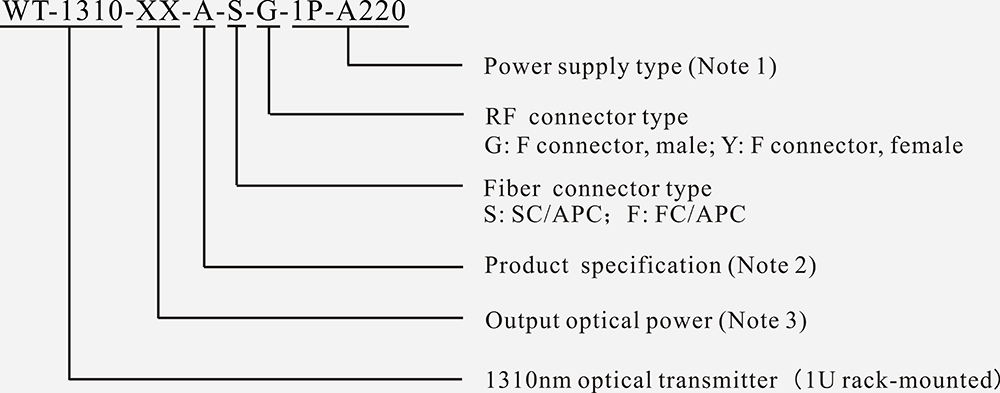
Note 1:
1P-A220: AC 220V single power supply
1P-D48: DC 48V single power supply
2P-A220: AC 220V dual power supplies
2P-A220+D48: AC 220V+DC 48V dual power supplies
Note 2:
AV: Coaxial laser, 1.2G, RF insertion with high isolation, full GaAs MMIC circuit, maximum 16mW (12dBm). Not distinguish between 860M, 1G and 1.2G.
BV: Butterfly-typed laser, 1.2G, RF insertion with high isolation, full GaAs MMIC circuit, maximum 31mW (15dBm). Not distinguish between 860M, 1G and 1.2G.
Coaxial lasers are recommended for 16mW (12dBm) and below, and models below 10mW (10dBm) are
not recommended, combined to 10mW (10dBm).
Note 3: The number represents the output optical power mW, up to 31mW (15dBm).
Note 4: If there are special requirements for lasers, please indicate in the order.
Note 5: The standard front panel is made of black engineering plastic.
Note 6: The standard fiber interface and RF interface are on the rear panel.
Note 7: The standard switching power supply module is made by us.
Note 8: Equipped with standard national class II transponder.
Attention
● Insure the package is not defaced. If you think the equipment has been damaged, please don't electrify to avoid worse damage or do harm to the operator.
● Before the equipment is power on, make sure the housing and the power socket is reliably grounded. The grounding resistance should be <4Ω, so as to effectively protect against surges and static electricity.
● Optical transmitter is professional equipment. Its installation and debugging must be operated by special technician. Read this manual carefully before operating to avoid damage to equipment caused by fault operation or accident harm to the operator.
● While the optical transmitter is working or debugged, there is an invisible laser beam from the optical output adapter on the front panel. Avoiding permanent harm to the body and eye, the optical output should not aim at the human body and people should not look directly at the optical output with the naked eye!
● When the fiber connector is not in use, it should be put on the dust jacket to avoid dust pollution and keep the fiber tip clean.




